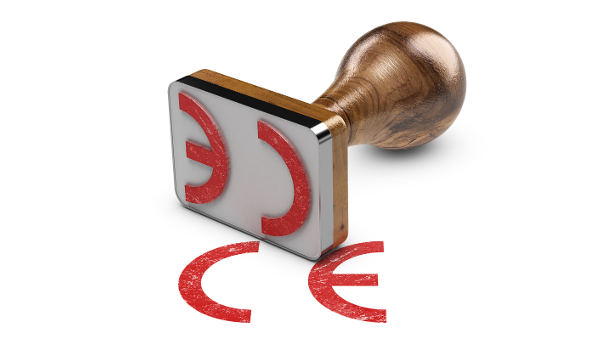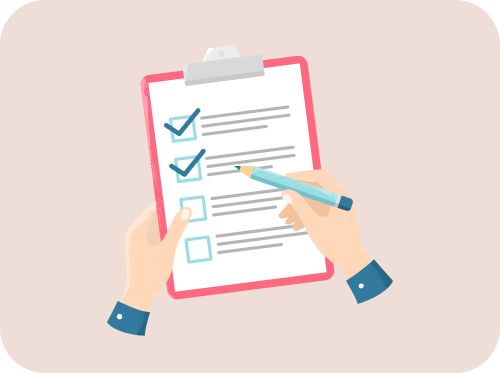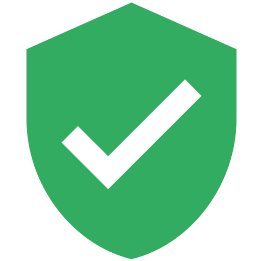Product lab testing is in practice required when importing or manufacturing electronics, toys, sunglasses, and other products which require CE marking in the EU. In this guide, we cover everything from testing costs to identifying relevant standards for CE marked products.
Content Overview

FREE CONSULTATION CALL (30 MIN)
 Ask questions about compliance requirements
Ask questions about compliance requirements Countries/markets:
Countries/markets:
 Learn how we can help your business
Learn how we can help your business
You will speak with:Ivan Malloci or John Vinod Khiatani
What is CE testing?
CE marking is mandatory for products covered by one or more CE marking directives. Here are a few examples:
- RoHS Directive
- Low Voltage Directive
- EMC Directive
- Toy Safety Directive
- Personal Protective Equipment Directive
These directives provide general safety requirements applicable to the products. Importers and manufacturers must then identify the relevant harmonised standards for their products. Lab testing is then conducted to verify if the product is compliant with the relevant harmonised standards.
Examples
EN 71-1 – Mechanical and physical properties requirements for toys
EN 71-2 – Flammability requirements for toys
EN 13637 – Safety requirements and test methods for building hardware
EN 50065 – Signalling on low-voltage electrical installations
EN 50360 – Product standard for wireless communication devices
EN 55035 – Immunity requirements for multimedia equipment
CE testing essentially comes down to third-party lab testing for the sake of verifying compliance with applicable standards (e.g. EN 55035). That said, there is no such thing as a uniform ‘CE test’ or ‘CE testing standard’.
Is lab testing mandatory for CE marked products?
The purpose of the CE mark is to demonstrate that the product conforms to certain safety requirements. Most directives that require CE marking don’t explicitly mention third-party lab testing as a requirement. However, importers and manufacturers must still verify compliance through a conformity assessment procedure – which in practice requires lab testing.
Low Voltage Directive
When deemed appropriate with regard to the risks presented by electrical equipment, manufacturers shall, to protect the health and safety of consumers, carry out sample testing of electrical equipment made available on the market, investigate, and, if necessary, keep a register of complaints, of non-conforming electrical equipment and electrical equipment recalls, and shall keep distributors informed of any such monitoring.
Toy Safety Directive
When deemed appropriate with regard to the risks presented by a toy, manufacturers shall, to protect the health and safety of consumers, carry out sample testing of marketed toys, investigate, and, if necessary, keep a register of complaints, of non-conforming toys and toy recalls, and shall keep distributors informed of any such monitoring.
Test reports are also listed under the technical documentation requirements.
Keep in mind that very few importers and manufacturers have the required expertise and equipment to carry out their own lab tests. Hence, third-party lab testing is in practice often the only option.
How do I know which standards and tests apply to my product?
You can either identify the relevant harmonised standards yourself or ask a lab to provide an assessment. Labs often provide a list of standards that they deem applicable, as part of a lab test quotation.
How much does CE testing cost?
The cost depends on the number of applicable directives and, by extension, the number of applicable EN, IEC, and ISO standards. Lab testing costs are generally priced on a ‘per test’ basis.
While there is no standard ‘CE testing cost’, these cost examples can still give you a general idea of how much it can cost:
- Power bank: USD 1500 to 3000
- Electronic component (RoHS): USD 5 to 50
- AC adapter: USD 1100 to 1500
- Wooden toy: USD 800 to 1200
- Sunglasses: USD 1100 to 1500

Is a lab test report sufficient when selling CE marked products?
No, a lab test report alone is not enough to demonstrate compliance. In addition to the test report, you must also issue a Declaration of Conformity and technical documentation. The latter normally includes the following:
- Design drawings/Technical drawings
- Bill of materials
- Packaging file
- List of applicable EN/IEC/ISO standards
- User manual
- Risk assessment
Note that test reports are often used as a support document to the technical file. The test reports serve as proof that your product is compliant with all applicable standards.
Why do I need lab testing if my product is already CE marked?
The CE mark alone is not sufficient to prove that a product is compliant with all relevant EU directives and standards. In fact, there are plenty of unsafe products manufactured outside the EU, carrying the CE mark, but failing to comply with the relevant safety standards.
Obviously, printing a CE mark doesn’t magically make a product safe and compliant.
This is also why lab testing is necessary when importing both custom-designed (OEM) and factory-designed products (ODM) from China, and other countries.
Can I get a test report from my supplier?
It’s possible, at least in theory, to use lab test reports held by the supplier. However, this is rarely a viable option for these reasons:
1. It’s very rare that suppliers can provide CE test reports for their own factory-designed products. If they do, they normally only have valid test reports for a limited number of SKUs.
2. You cannot apply test reports from one product to another. As such, you cannot apply supplier test reports to a new OEM product that has previously not been produced.
3. Using existing supplier test reports is risky even if a valid test report exists for the exact same SKU. The reason is that the supplier may change components and materials from one production run to another.
4. Many supplier test reports held by manufacturers in China are issued by unknown lab testing companies. Such test reports can be impossible to verify.
In short, there are very few scenarios in which you can apply existing supplier test reports to both factories designed (ODM) products and custom-designed (OEM products). Still, many importers have a tendency to accept any test report provided by the supplier at face value.
How do I check if a CE test report is valid?
You can contact the issuing company (e.g. QIMA or Bureau Veritas) and request a test report verification. This is normally provided free of charge. Some testing companies also allow you to verify test reports directly on their website.
What can happen if I don’t have a valid lab test report?
Market surveillance authorities mainly request two documents from importers when performing compliance checks:
- Lab test reports
- Declaration of Conformity (DoC)
Failing to provide a valid test report can result in a forced recall, meaning that you must stop selling your product immediately.
Also, note that not just any test report is accepted at face value. The company name, product SKU, list of standards, and other relevant information must all add up.
At what stage should we arrange lab testing?
Lab testing can either take place before mass production or after production – also called batch sample testing. Sometimes you may need to arrange to test for both pre-production and batch samples.
Pre-Production
It’s often necessary to verify compliance with the applicable EN standards before you enter mass production. Without verifying compliance, you run the risk of mass-producing a product that is inherently non-compliant by design.
Pre-production testing, therefore, serves as a safety check before it’s too late to correct technical compliance issues. For example, it’s always necessary to verify electrical safety and mechanical design safety before mass production.
This only applies for as long as the pre-production samples are the exact same as the final mass-produced product.
Batch sample
Batch samples, unlike pre-production samples, represent the products you’re actually placing on the market. As such, batch testing is often required for the sake of ensuring that the final product is compliant.
Further, there can be differences in terms of components, materials, and paints between prototypes and final products – which is why batch sample testing is needed.
How long does the testing process take?
The testing process time differs depending on the product type and applicable standards. However, in most cases, the testing procedure takes around 2 to 3 weeks from sample delivery.
Do we need lab test reports when selling CE marked products on Amazon?
Yes, Amazon is fairly strict when it comes to ensuring that CE marked products are not only marked as such – but also lab tested. Amazon tends to request both a lab test report and a Declaration of Conformity at the same time to verify compliance.
























.png)
.png)
.png)



Hi, we are a manufacturer and installer of access systems across the UK and Europe. At a project in Spain we have been asked to provide proof of compliance to EN13637. We only manufacture the Card reader and PSU/control unit which have both been tested to IEC 62368-1 & ETSI EN 300 330. I cannot find anywhere that specifically test to the EN 16367 standard and nothing states that this certification relates to the Reader and control unit. Any advise/knowledge you can share on EN 13637 would be greatly appreciated.
I am making a custom toy plush (OEM) from China, and will get it CE EN71 certified for it’s mass production batch of 50. I want to ask you: Do I have to get it certified again (paying a hefty fee for the lab test & report) if I want the manufacturer to make say, a batch of 100 in the future?
Would the obtaining of factory acceptance testing on power generators in the EU be the same as obtaining CE certification
Hey,
Can you send me the list of tests required for CE marking?
Hi Saba,
There is no such list. That depends on the applicable regulations/directives and by extension the applicable EN, IEC, and other standards.
The EN standards and corresponding lab tests applied to a toy are very different compared to, say, a power bank.
And for medical devices as well. Right?
We don’t cover medical devices
my supplier has recommended a lab, their certificate says they are CNAS and ILAC accredited, are there any more checks i need to do before using this lab? I tried using Qima, they quoted $1k then doubled it to $2k once receiving an expensive amount of samples.
Hi Kevin,
Not sure how relevant CNAS and ILAC are in this case.
Dear Fredrik,
It is stated that we are manufacturer of N95 Mask and we have tested our product is tested as per EN-149 standard. Now we want CE Certificate for our product. Please help us to apply CE certification of CAT-II N95 mask according to FFP2 class.
your kind favour will be highly appreciated.
Hello Sir,
I need a quotation to get CE certification for NFC reader product.
Also if you can provide FCC quotation for the same product it would be appreciated.
Here are some details about the product:
The product is NFC reader/writer with USB interface to PC
Power Supply: USB powered
Interfaces: 1 x USB
Case: ABS plastic
Dimensions: 80mm x 40mm x 12mm
internal chipset: RFID chip coming from NXP and it is CE and FCC marked
Regards,
Mohamed Ahmed.
And if selling a bluetooth handsfree Item? I need the Bluetooth report from the Supplier?
And I need to sign up on the bluetooth website for the free account?
And then what document do I need to draw up for the supplier, Bluetooth Co. and I? Stating what?
And am I aloud to have the bluetooth Logo on my website or marketing Material?
and I do know that my product should be marked with the bluetooth symbol on the product and if not on the packaging forsure with the FCC and CE as well??
And Does a Bluetooth Chip Roda 1536U have the same regulations as the Bluetooth speaker?
Is it a real bluetooth Chip? And this might be a stupid question but if its not by Bluetooth then do I still need to go through Bluetooth or just the FCC and CE?
Thanks!
Hello Jennifer,
Bluetooth is licensed technology. I know they charge fees, ranging from 2500 up to 8000 USD per SKU or something like that. Not sure if that only applies to the chip makers or also end products.
Do you have a list of labs in the EU or UK that can do testing to EN14605?
What are mandatory lab tests required for a dehumidifer which has CE Marking in order to meet Machinery and Low Voltage Directives
You need to ask a lab to help you assess applicable EN, IEC and ISO standards
So far as I read your articles and others in the internet, may you pls. clarify if there is an EU database which can check whether a manufacturer is qualified to affix CE mark ? Besides, is there an EU Authorised Representative which based in Asia ?
Hi Maggie,
I don’t think this such a database exists. For most products, the CE mark is “self affixed”.
No, I don’t think an EU authorized representative can be based in Asia, or anywhere outside the EU for that matter. That would defeat the entire purpose of having a European representative.
Can you give me the company ho make CE test report for non medcical KN 95
KN 95 is a Chinese standard. It has nothing to do with CE marking.